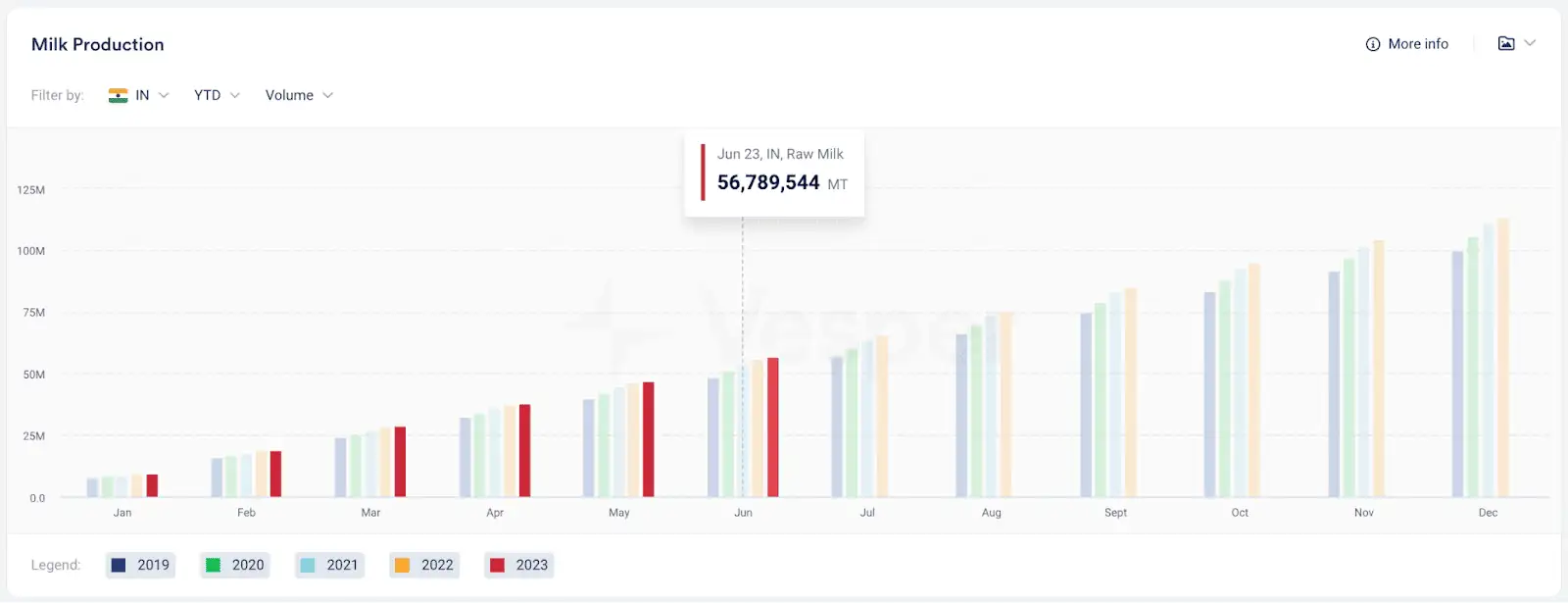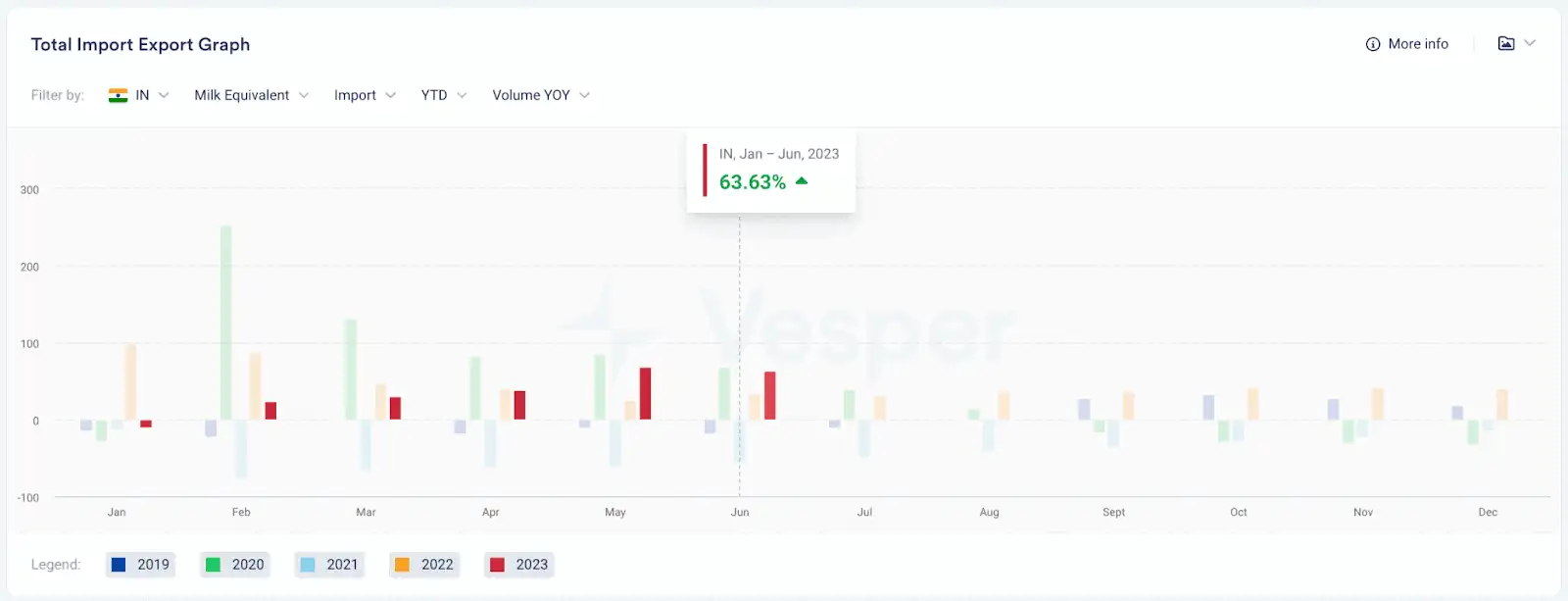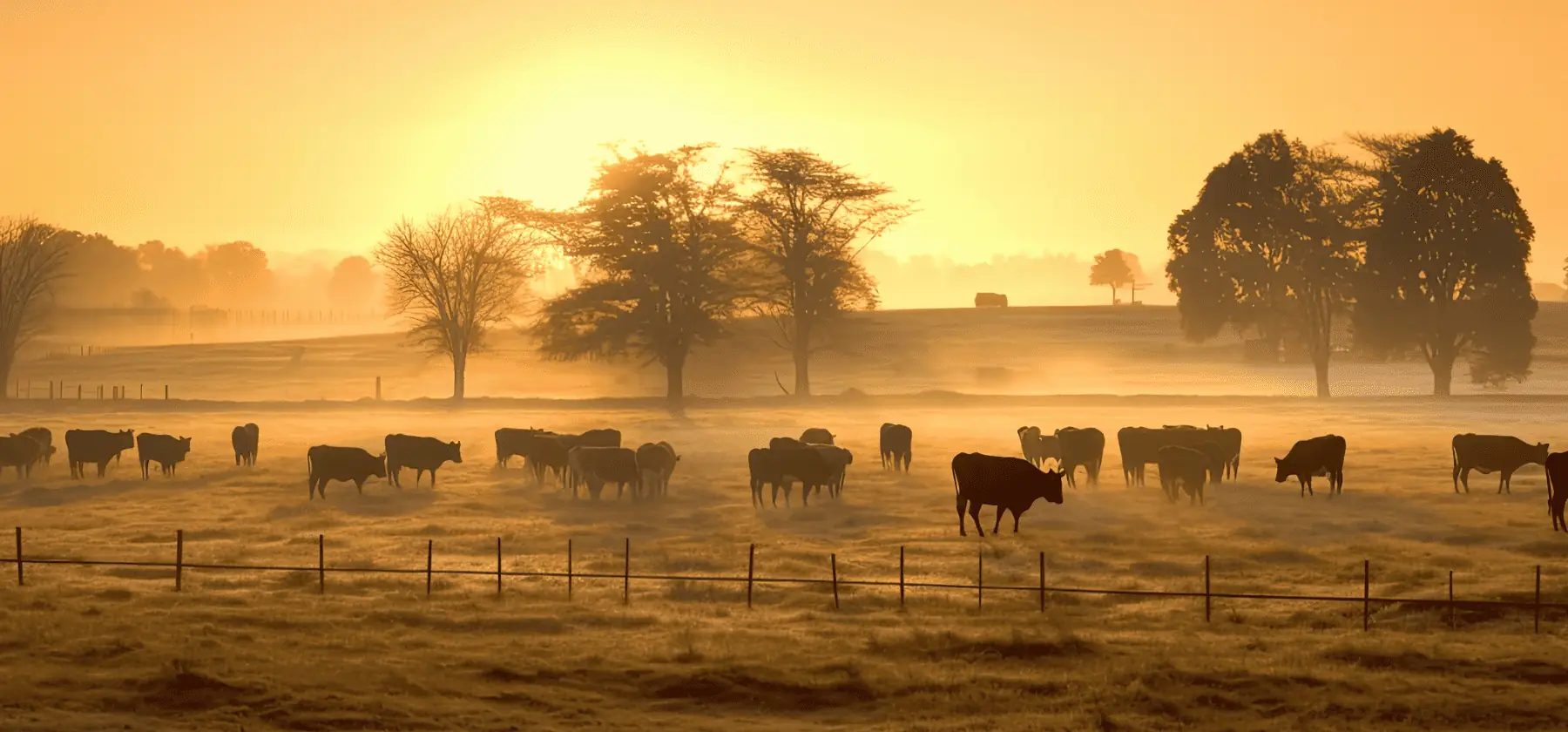Previously, dairy market players could only access annual historical data on milk production coming from India, but now Vesper users have the capability to dig into monthly-updated milk production statistics. Based on our most recent production data, India has demonstrated a consistent rise in milk production over the past five years. However, the growth trend has slowed down, this year with a modest increase of 1.49% compared to the previous year (Fig 1.).
Tip(!): You’re welcome to take advantage of our free dairy calculators for tasks such as calculating the feed to milk price ratio.

Fig. 1: Five year overview of India’s Milk Production figures
This trend is not in line with India’s goal to become a world leader in milk exports. Together with the fact that an oversupply of milk during the pandemic has turned into a shortage during 2022 and 2023. The shortage resulted from a combination of factors, including tighter and pricier cattle feed, an outbreak of Lumpy Skin Disease (LSD), and the 2022 monsoon season (June to September), which brought about both excessively dry and wet conditions in various areas. Despite stagnating growth, India is still the largest milk producer, holding a year-to-date accumulation of 56,789,544 MT.
The combination of lower milk production and shortages has created a minor shift in imports. India has always been known as a very internal market, and despite their resistance to imports, imports increased to 14,092 MT YTD Jan-Jun (see fig. 2)

Fig. 2: Five year overview of India’s Milk Equivalent Import Figures
Should this trend persist, it could potentially impact the global market, although this year’s import figures remain relatively modest, standing at 11,581 MT as of May 2023.
In a bid to decrease reliance on imports, the Indian government’s National Action Plan for Dairy Development has set forth an objective of elevating the proportion of organised milk production from its present rate of 20-21% to 50% by the fiscal year 2023-2024. The plan seeks to enhance cooperative-led milk handling from 10% to 20%, while simultaneously raising private sector involvement from 10% to 30%. Should these objectives be met, Indian dairy farmers would attain enhanced entry into the organized milk processing sector, translating to potentially increased incomes in the long run. According to the projections from Foreign Agricultural Services (FAS) New Delhi, fluid milk production, including cow, buffalo, sheep, and goat milk in India for the year 2023 is anticipated to witness a nearly 2% upswing, reaching 207 million metric tonnes, assuming a typical southwest monsoon season (June-September).
Read more analyses on global milk production on the Vesper platform.
